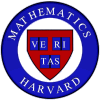|
Fall '01
- 1.
- Modular Forms Martin Weissman(martinw@math)
Prerequisites: one semester of complex analysis (such as Math 113), also one semester of algebra or concurrent enrollment in algebra is strongly recommended.
Tutorial description: The interaction between complex analysis, geometry, and number theory is nowhere as beautiful as in the theory of modular forms. In this tutorial, we will study classical modular forms, along the lines of Jacobi and Hecke. Classical modular forms are special functions - unusually symmetric functions on the hyperbolic plane - which also encode tremendous number-theoretic information. While the classic textbook by Miyake will be used as a reference, we will often stray from the text in order to talk of interesting applications of modular forms to number theory.
- 2.
- Classical Mechanics and Geometry Edward Lee (lee@math)
Prerequisites: multivariable calculus, linear algebra and comfort with reading and writing rigorous mathematical arguments are necessary prerequisites. For example, completion of Math 21a,b and Math 101, or Math 23a,b, or Math 25a,b or Math 55a,b satisfies this prerequisite. In addition knowledge of point-set topology at the level of Math 101, 112 or 131 will be assumed.
Tutorial description:The purpose of this tutorial on classical mechanics and geometry is twofold. The first goal is to introduce the basic concepts of differential geometry through the use of examples in classical mechanics. A second goal is to see how theorems and problems in classical mechanics can be formulated and solved using the machinery of differential geometry. Examples of the concepts from differential geometry that we will study include symplectic forms, which arose from the Hamiltonian formulation of mechanics. Another example is the principle of stationary action, which comes from basic Langrangian mechanics and which leads to the study of geodesics on a Riemannian manifold. As an example of the theorems that we will study, there is Liouville's theorem, which states that the volume of a region in the phase space of a Hamiltonian system is invariant under time. This is easily checked for a simple system like a mass on a spring, where the phase space orbits are ellipses, but the theorem holds more generally as well. Later on we'll be able to study the dynamics of a rigid body. In particular we will show why the rotation of a book about the long and short axes is stable, while the rotation about the middle axis is unstable.
Spring '02
- 1.
- Statistics and its Applications to Biology Stanley Sawyer
Prerequisites: probability theory (at the level of Stat 110) and linear algebra.
- 2.
- Milnor's Seven-Spheres (algebraic and differential topology) Jacob Rasmussen (jacobr@math)
Prerequisites: multivariable calculus, linear algebra and comfort with reading and writing rigorous mathematical arguments are necessary prerequisites. For example, completion of Math 21a,b and Math 101, or Math 23a,b, or Math 25a,b or Math 55a,b satisfies this prerequisite. In addition knowledge of smooth manifolds and homology theory at the level of Math 135 will be assumed.
Dates to remember:
Tuesday, September 11, 5:30 pm - The first meeting of the Math Club at Mather House in Dining Rooms A&B.
Wednesday, September 12, 4:00 pm - Organizational meeting for the Fall tutorials, Rm. 530
|

